2009 Ford Flex Review
When it comes to family-hauling vehicular solutions, we're at the end of the tunnel. In the face of $5 a gallon gas, SUV and minivan sales have vaporized. The mushroom cloud of market crash is overhead. One need only look at the discrepancy between SUV/CUV and small car sales to realize we're in the dystopic, post-apocalyptic era– as far as Detroit's concerned. While Ford rushes its Fiesta compact into production (hola!) and focuses on its existing passenger cars, they've come up with the Flex, a big-ass people mover. Seven seats and xB style. How great is that?
Rather than opt for a swoopy crossover or an SUV lookalike, the Flex's designers settled on a boxy two-box design. The headline details: the contrasting color roof, the Woody-reminiscent side strakes and an aluminum trimmed tailgate. The Flex looks great. Even better– and more significantly– it looks different. The Flex stands apart from its competitors, from the Honda Pilot to the GMC Acadia. In today's market– where many products are comparable in overall function and performance– that's a good thing, not a bad thing. The Flex may not be polarizing enough to fall into J. Mays's intended "love it or hate it" category, but it's what Ford needed to do here. It's a distinctive vehicle in the overcrowded segment.
Once you get the people in the dealership door, what's it like inside? Inside the door of the Ford dealership, it's dusty. Inside the Flex, we find Ford's finest-ever interior, at least on this side of the Atlantic. The Flex's fit and finish, the interior detailing and the materials involved are all top shelf. If I was a Ford dealer, I'd be worried about having a Flex on the floor next to everything else.
The Flex's seats are extremely cushy and supporting, wrapped with either herringbone patterned cloth (shades of VW) or leather. Frasier's father would want one of these chairs in his son's living room, which is probably smaller than the Flex's second row. The six-inch-stretched D3 platform's wheelbase makes for such an expansive second row that the Flex betters the livery-standard Lincoln Towncar in every way.
The Flex's third row is… functional. Functional in the sense that the way back is inside the car, that it is, in fact, the third row, and a few smaller human beings of smaller stature would be happy in situ, though only two at a time (or three, if the people are Jessica Biel, Kate Beckinsdale and me).
The flip ‘n fold mechanism is the same one that's used in the what-the-hell-do-we-do-with-it-now? Ford Taurus X. The Flex's folding seats are jerky and not especially intuitive. They also became stuck on my test car. (Oops.) Once everything is folded flat, including the front passenger seat, we're looking enough cargo space for the most lifestyle challenged slacker. But let's not carried away here (literally): the Flex is not a realistic alternative to a mega-SUV or minivan for hauling aptitude.
Ford is touting the Flex's available toys and creature comforts. In the interest of space, we're talking about a huge touch-screen navigation system, SYNC gen 2, a compressor-driven refrigerator, up to four sunroofs (or as few as none), optional 19" wheels, heated rear seats, rear A/C outlet, etc.. Either you want these fripperies (Jeez that's expensive for a Ford) or you don't (flexible credit terms available ).
The Flex's driving experience– previously embargoed in the name of "Save the Buff Books"– is perfectly fine. The CUV packs a 262 horsepower 3.5-liter V6 hooked up to a six-speed automatic and optional all wheel drive. None of the these three factoids is particularly relevant. This is a car for people who don't care about driving. By the same token, insulation isolation is the Flex's trump card. The Flex has a Tempurpedic-quality ride and enough laminated glass to crate a recording studio. In fact, you could hear a pin drop at 75 miles per hour– although what you're doing fooling around with a sharp object at that speed is anybody's guess.
There are two reasons for FoMoCo suits to be worried about the Flex's prospects. First, this concept isn't new; even in recent years (see: Chrysler Pacifica and Ford Taurus X). Second, the Flex's fuel economy (17/24 mpg) is no better than other crossovers like GMC's Acadia (16/24). As Frank Williams has reported, SUV refugees are skipping straight to cars, and for good reason.
Still, the Ford Flex is a lovable machine. It's the first completely, bumper-to-bumper "finished" car Ford has made in many, many years. And it's one of the most– if not THE most– pleasant machine in which to passenger– at least in the first two rows. With the SUV exodus in full swing, Ford will have to hope that style trumps fuel economy. Chances are iffy.
Latest Car Reviews
Read moreLatest Product Reviews
Read moreRecent Comments
- SCE to AUX Norway is in Europe, and Tesla is an American automaker - no problems there.I wouldn't use Ford as the bellwether.https://www.reuters.com/business/autos-transportation/tesla-extends-lead-norway-evs-take-record-82-market-share-2024-01-02/https://elbil.no/english/norwegian-ev-policy/
- Steve Biro If the U.S. government wants to talk about banning all connected cars - or at least the collection and sharing of information from said vehicles - I’m all ears. Otherwise, don’t waste my time.
- Ajla Both parties are in favor of banning Chinese vehicles so I don't see how it won't happen in the next year.
- Add Lightness I don't waste a lot of time watching nothing much happening by watching the YouTube 6 minute highlights.
- MrIcky from my rental fleet experience, id rather drive one of these than a camry.






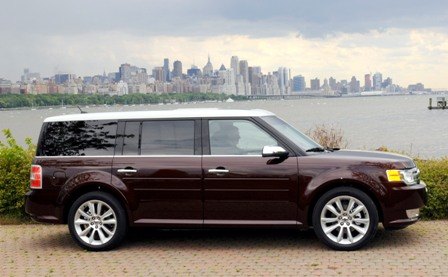
















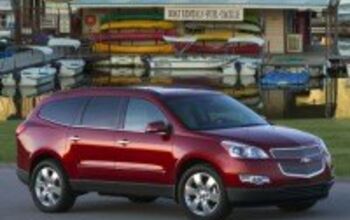
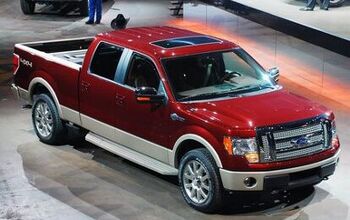
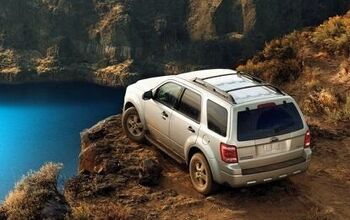
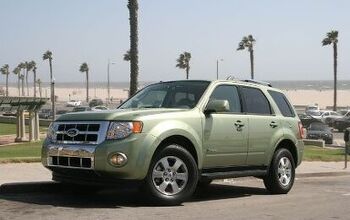










Comments
Join the conversation
Re: DougDolde I am also loving my Flex. I got essentially a base Limited model, black with silver roof. Only option is captains chairs for second row. Fantastic vehicle. Great for family hauling duty. I call BS on DougDolde's mpg claim.
Never, ever thought I'd buy a Ford, just not something that ever occurred to me. Now that Ford took no bailout money because they preferred to work things out with sound management principles rather than tax-payer money...I'm buying Ford. Flex is my choice to replace an aging minivan. It only makes sense to buy into companies that are soundly run.